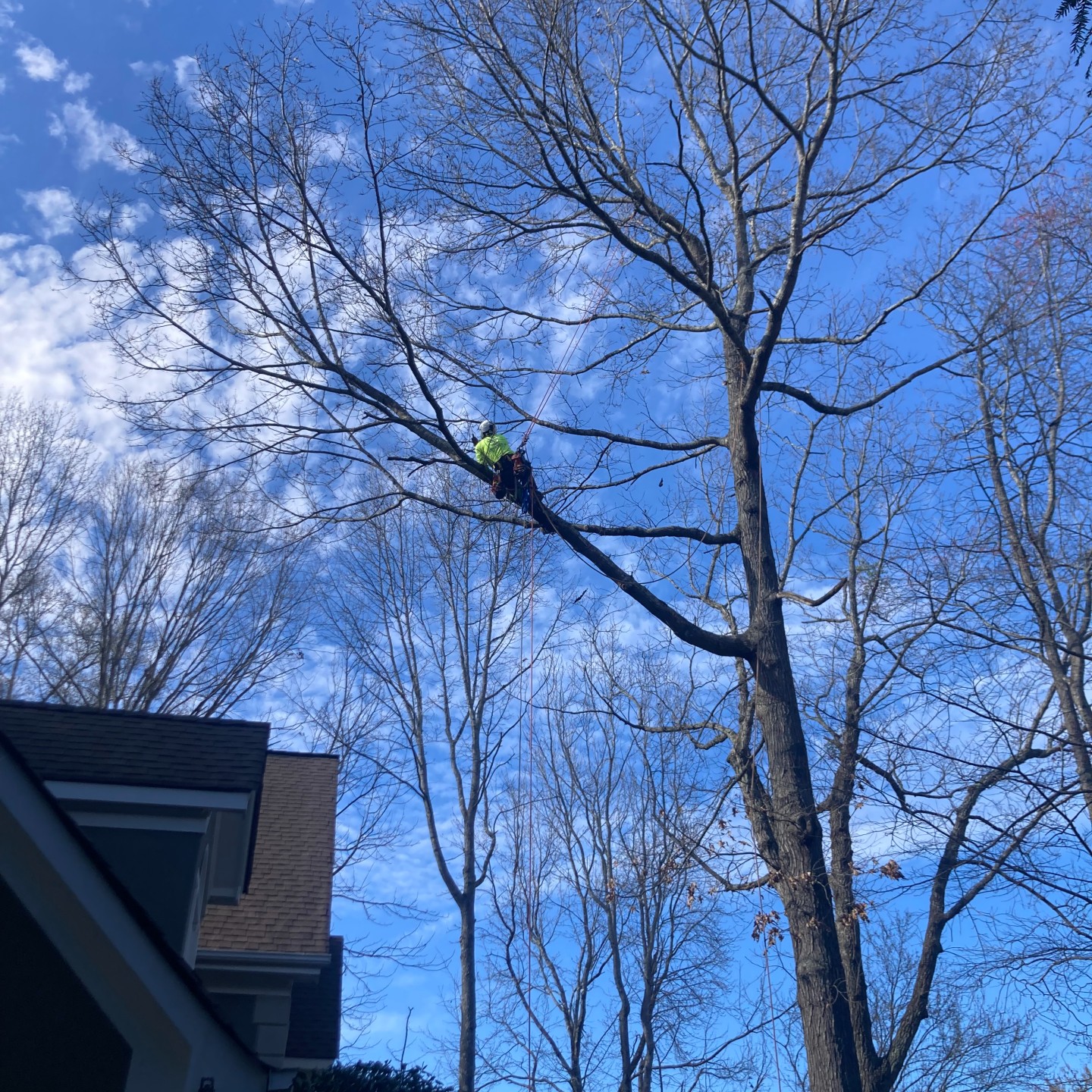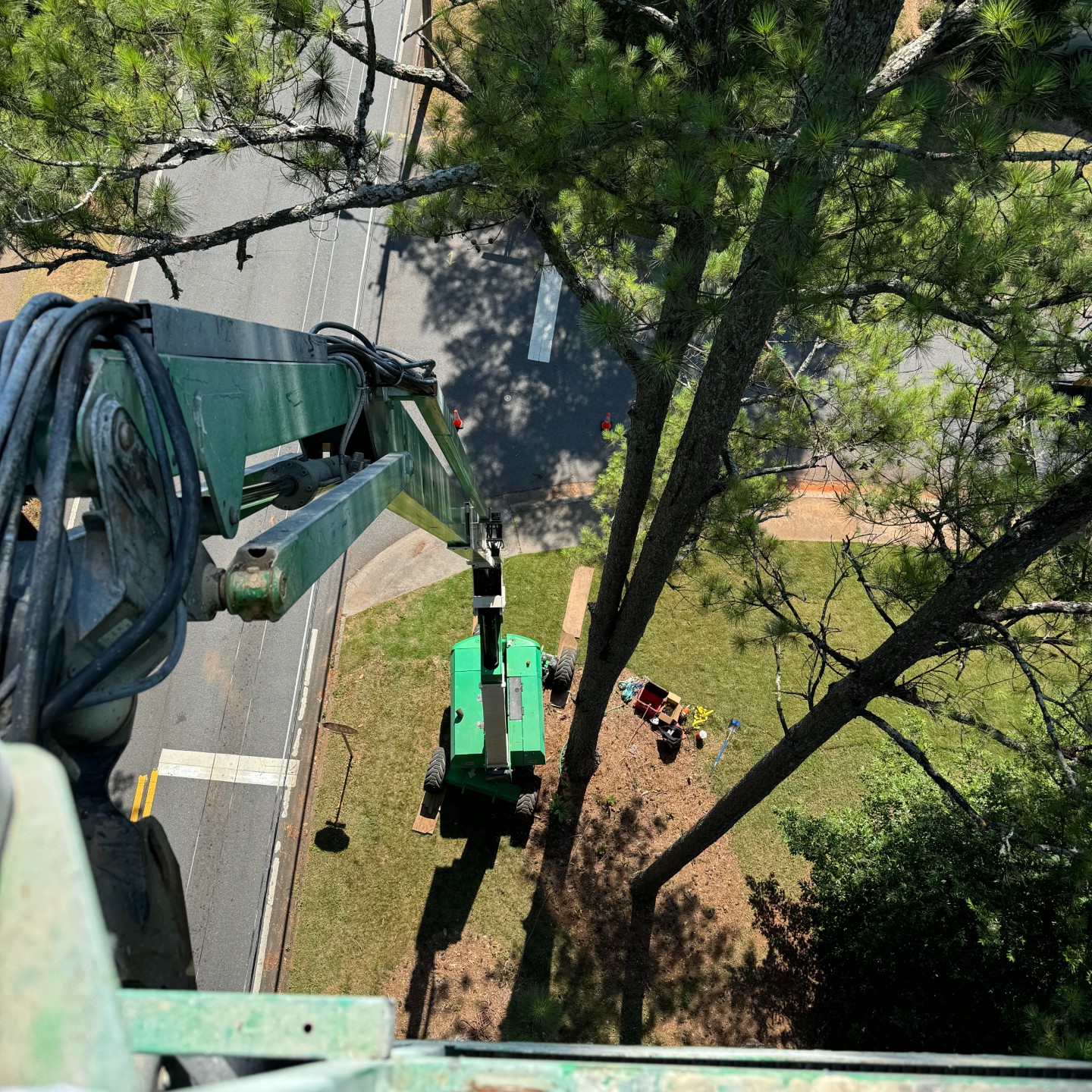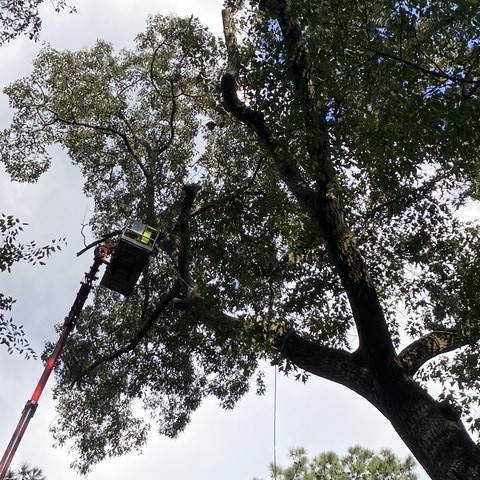Trees Growing Next to Your House: Should You Remove Them?
Shade, beauty, and cleaner air—trees add a lot to a home. But when a tree grows close to the house, it can also introduce risks to people, property, and utilities. Here’s how to decide if a nearby tree can stay, what to watch for, and how professionals safely remove trees in tight spaces.
Request a Free Assessment 770.999.9593
Is My Tree Too Close to the House?
“Close” is relative. A tree that can strike your home if it fails—or that regularly contacts the roof, siding, windows, or gutters—may be too close for comfort. Evaluate both current issues and the tree’s future size as it matures.
Questions to Help You Decide
- Is it causing problems now? Branches scraping shingles or siding, broken windows, pulled gutters, tripping hazards from surface roots, or frequent limb drop near walkways are red flags.
- Will it cause problems later? Consider mature size. Expanding canopies can encroach on structures; roots may impact foundations, driveways, plumbing, or irrigation over time.
- Can maintenance solve it? Strategic pruning can reduce conflicts with roofs and lines. Cabling/bracing may help stabilize weak unions or leaning stems in some cases.
If routine pruning or structural support won’t mitigate the risk—or the tree is in poor health—removal may be the safest option.


Common Reasons to Remove a House-Adjacent Tree
- Dead, dying, or unsafe structure: Indicators include cracking, decay, hollow trunk, excessive bark peeling, canopy dieback, or sudden leaning.
- Encroaching on power lines: Trees contacting or leaning toward energized lines can cause outages, fires, or electrocution hazards. Never DIY—call professionals.
- Root conflicts: Roots can invade plumbing, lift slabs and sidewalks, and exploit hairline foundation cracks, expanding them over time.
- Persistent property damage: Repeated roof, siding, or gutter damage despite maintenance suggests removal may be more practical.
A professional assessment will confirm whether remediation (pruning, cabling, growth control) is viable or if removal is the prudent choice.
How Pros Safely Remove Trees Next to Homes
- Climber sectional removal: A trained climber dismantles the tree from the top down, lowering limbs and trunk sections with ropes and pulleys to avoid impact.
- Crane or grapple assist: In tight access or over structures, cranes/knuckle booms lift sections away for maximum control and minimal yard disturbance.
- Site protection & staging: Crews plan equipment placement (e.g., chipper and log truck), protect lawn and hardscapes, and maintain safe drop/rigging zones.
Close-proximity removals are all about planning, rigging skill, and communication between climber, crane operator (if used), and ground crew.

How to Prepare for a Close-Proximity Removal
- Notify neighbors about timing and potential parking impacts.
- Clear driveways/streets so service trucks and cranes can stage.
- Move portable items (vehicles, furniture, grills, planters) from the work zone.
- Confirm property lines & ownership and review any HOA/municipal rules. For public trees or right-of-way questions, check your local city/county guidance.
A little preparation keeps the project efficient, safe, and tidy from start to finish.
Need Help with a Tree Growing Near Your Home?
Not sure if your tree is too close—or if pruning can solve it? Longview Tree Company provides honest assessments, precision pruning, structural support, and safe removals in tight spaces.
770.999.9593